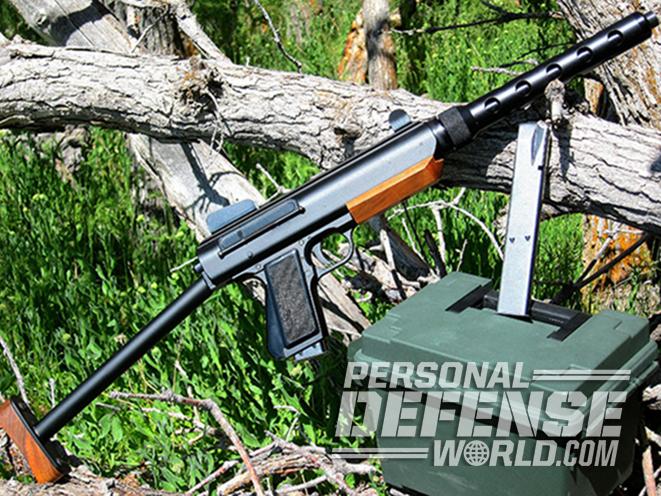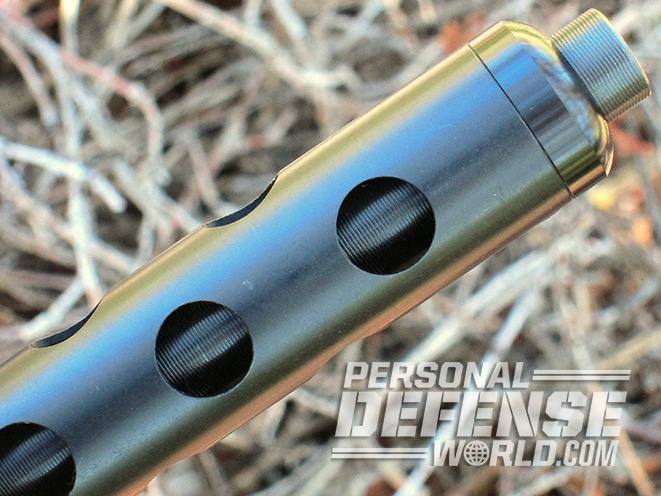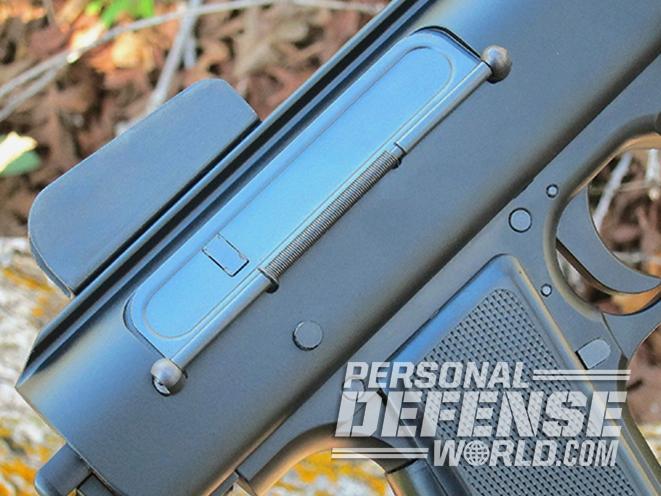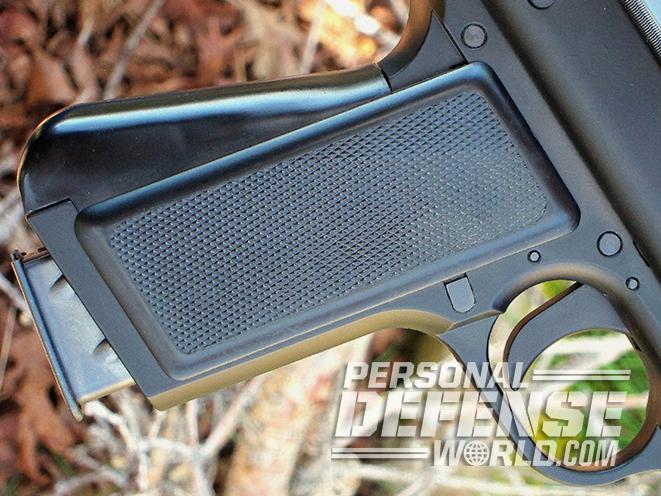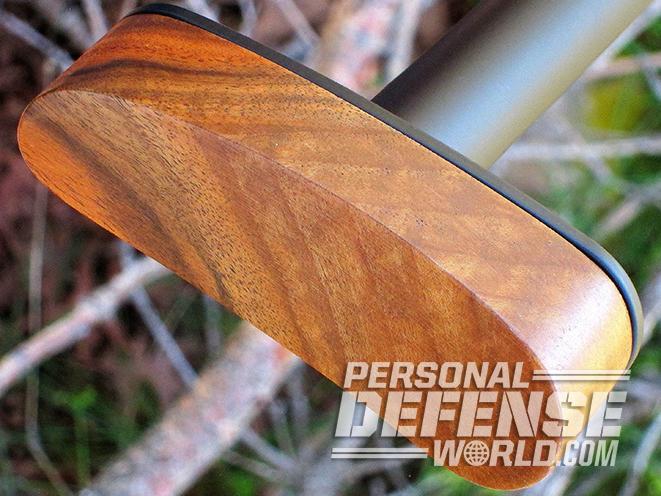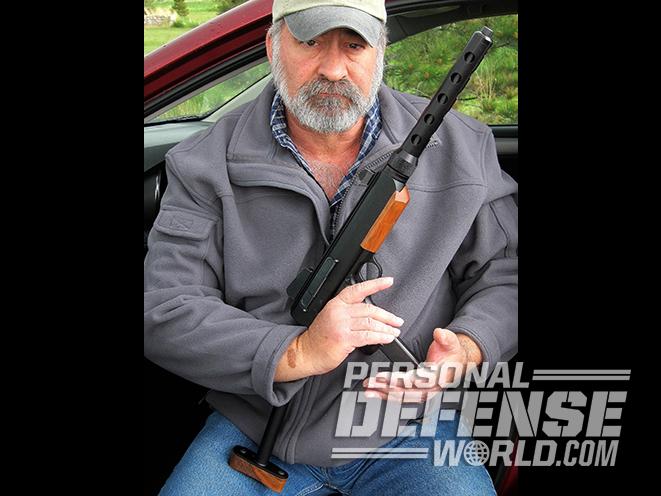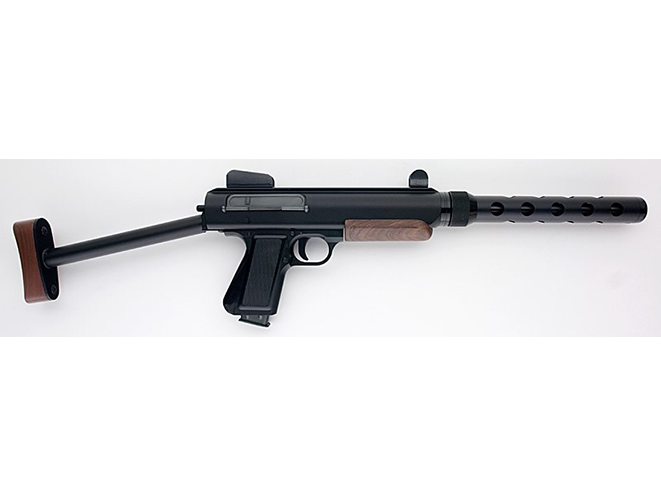The original Wilkinson Arms was a relatively short-lived and privately owned affair that manufactured products designed by its owner, Ray Wilkinson, first in California and later in Indiana, between 1970 and 1998. Wilkinson’s main three production models included the small Sherry .22 LR pistol, a larger Linda 9mm pistol and the Terry 9mm carbine based on the Linda. All three were named after his daughters, and a Diane .25 ACP model named after his wife also appeared in small numbers.
These guns were well made, but none burned any barns in sales figures, and after the death of the founder, leftover parts were later used by Northwest Arms to briefly resurrect the carbine from 2000 to 2005. The Sherry and Diane were overshadowed by other small .22 and .25 pistols of the era like the Beretta Jetfire long before the current concealed-carry pocket pistol market exploded.
The Wilkinson Linda was a huge pistol by any standard and was not easily adaptable to any sort of belt carry, and the Terry had a suggestion of spacey-ness about it with its cone-shaped flash suppressor. Of the Wilkinson models, it’s not hard to see why the one that lasted the longest was the carbine, but even then, it has always been something of a niche gun and a hard sell. You have to want one to appreciate one, and you have to appreciate one to want one.
Advertisement — Continue Reading Below
Linda In The 1980s
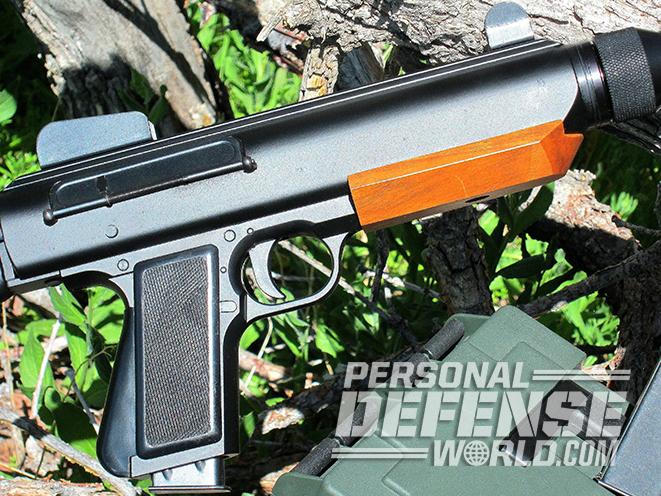
I never saw a Sherry or a Terry, but I do recall a Wilkinson Linda pistol that a colleague at work owned in the mid-1980s. A fellow firearms instructor at my police department had the misfortune of becoming the officer in our newly created department’s first officer-involved shooting. He survived, but the opposing participant did not. Friends of the deceased took great offense at the justified shooting and subsequently vented their anger by circulating word in appropriate circles that if our officer should somehow manage to get himself killed, a $5,000 reward would be duly placed in the hands of the facilitator.
- RELATED STORY: Here’s Why You Need a Home Defense Carbine
When this info was received back at the station, a paid “special assignment” vacation was offered to keep the officer off the streets while investigators pursued leads and temperatures had time to cool down. The officer refused the vacation, however, and continued his regular uniformed patrol assignment, but in the days before autopistols and carbines in cop cars, he did feel a trifle undergunned on the streets with a department-issued .38 Special, so a deal was worked out.
Our guy checked the existing market, settled on the Wilkinson Linda pistol with a 31-round magazine as the most firepower he could find crammed into a “handgun” package, and with a backdoor nod of approval from the chief on a gun never officially acknowledged or authorized, the Linda was privately bought and carried on duty, out of sight but readily accessible in the company car, for quite some time thereafter. My overriding memory of that Wilkinson today is of one very heavy and cumbersome pistol, but I totally understood where he was in his decision to partner up with it.
Advertisement — Continue Reading Below
But now there’s a new iteration of Wilkinson Arms located in Murphy, Idaho, owned and operated by Patrick McFarland, and the Wilkinson carbine is back.
Move Over, Terry
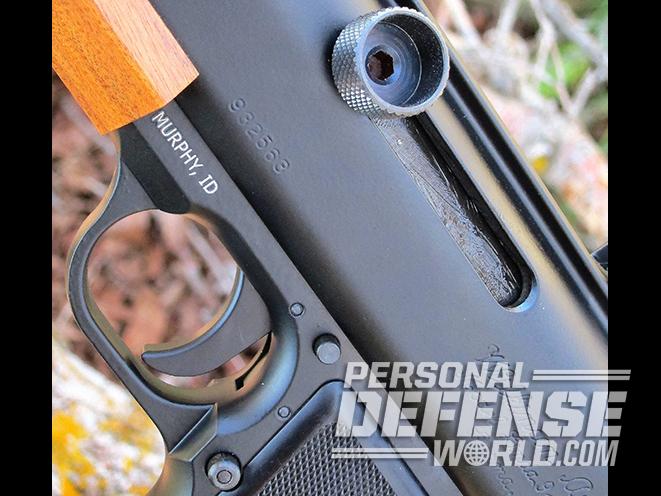
As noted, the carbine was initially known as the Terry, but at some point in the original company’s existence, its name was changed to Linda to match the pistol, and when McFarland brought the Wilkinson brand back to life, he stayed with the Linda name.
McFarland, incidentally, is a long-time Wilkinson fan, going back to his college days and the first Terry carbine he bought then. A Linda followed, and years later when he needed replacement parts, he tracked them down to Boyd Gray, who was then operating Northwest Arms in Washington, and the association that eventually developed brought about the new Wilkinson Arms. And in case you might be wondering, current Linda parts are fully compatible with the older Terry/Linda carbines, and aside from the stock and rail variations, the new model is essentially identical to the old. Key parts should interchange.
Advertisement — Continue Reading Below
The new Wilkinson Linda carbine, minus the muzzle cone, still projects a strong 1960-ish image, and it’s available in three different 16-inch-barreled configurations as this is written: the LE-3 with an AR-style collapsible stock and rails along the top and bottom; another LE-3 with an under-folding stock and rails; and one with walnut forend and a fixed, steel, tubular stock with a walnut “buttplate.”
All three versions of the Wilkinson Linda ship with one 31-round steel magazine, and 18-rounders are offered as options for a slightly more compact profile. All three can be ordered with or without threading at the muzzle, operate via straight blowback and feature iron sights, the same right-side ejection, steel dust cover, left-side knurled cocking knob, crossbolt safety, and the same takedown and reassembly processes for maintenance. They also all share the same black powdercoat finish, and Cerakote is available as an option. My test sample, the standard model with the tubular stock, weighed in at 6 pounds.
An In-depth Look
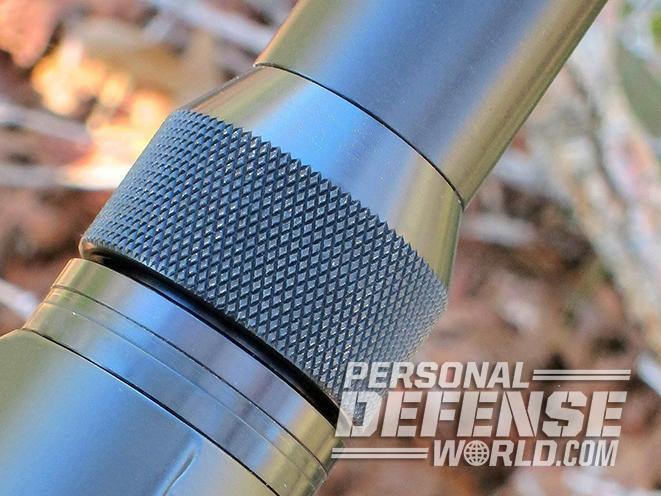
The Wilkinson Linda carbine is built using a cast-aluminum lower receiver with an integral pistol grip covered by a pair of black polymer grip panels, and the upper is made from extruded 6061-T6 aluminum with a Weaver-type rail. The 4150V steel barrel features a 1-in-10-inch twist rate. The fixed sights—a stamped-steel front post and aperture rear—are attached to the upper via hex-head screws.
Advertisement — Continue Reading Below
For disassembly, the shroud is retained by a large knurled barrel nut, and removing that begins the takedown procedure. With the shroud off, the barrel pulls forward and out. The trigger group is removed after taking out its two hex screws, and that’s as far as the company recommends you go for routine cleaning. The detailed manual includes clear instructions for going further, but this carbine is not designed for quick and easy field-stripping, and hex-head wrenches are required to get the bolt group out.
The steel crossbolt safety on the Linda is small, and the short-thumbed among us won’t be able to apply it easily without shifting their firing grip, but it’s not a major annoyance. Positioned about a quarter-inch above and behind the alloy trigger, it blocks only the trigger (not the hammer or sear), it’s exactly the same size as the rear trigger group’s retention pin, looks just like it, and if you didn’t know that, you might take a few seconds to separate it out as the safety. To be fair, if you’re right-handed, it’s easy to use your trigger finger to swipe the safety off if you need to quickly mount it to your shoulder with it on. Lefties, as usual, will have to work out their own routine.
Both 31- and 18-round magazines with black oxide finishes were shipped with the test carbine; both are relatively lightweight, unmarked steel units with aluminum followers, easily removable floorplates and no witness holes. The steel magazine release button provides a strong lockup, and the upside of the tight magazine-well fit is a no-rattle bonus, but the downside is that these magazines do not drop free. Count on swapping mags being a two-handed operation, with one holding the gun and the other hauling the magazine out. Again, it’s not ideally built for a tactical role as such, but it’s still doable. For non-recreational applications, just get your business done in 31 shots and Warp 9 reloads won’t be necessary. These proprietary mags are made in-house by Wilkinson and should fit in the original 9mm pistols and carbines.
Advertisement — Continue Reading Below
The Wilkinson Linda carbine uses an Uzi-style telescoping bolt with the chamber actually inside the bolt to keep the receiver from being too long, and the same Uzi-style hand-meets-hand magazine position inside the pistol grip. The gun is rated for +P rounds, but the company advises that it may not cycle perfectly at the other end of the spectrum with very light loads. The bolt doesn’t lock open after the last round is fired—it wasn’t a feature of the original design and hasn’t been added since. And dry firing is not recommended.
Wilkinson Linda Range Time
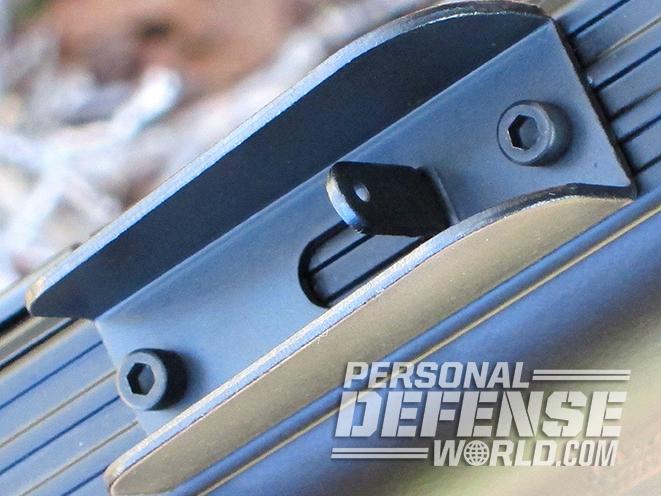
On a bright and calm day in May, the Wilkinson Linda carbine’s range session was mildly handicapped in that my regular 50-yard location was blocked by construction and the fallback site had me shooting un-shaded into the sun. Normally, open sights don’t present a very clear definition in a sun-ahead position, and I had to compensate by shielding the front sight with my left hand during all of the accuracy testing.
- RELATED STORY: Pistol-Caliber Firepower – 15 Can’t-Miss 9mm Carbines
I tested the carbine by firing three 5-shot strings with five different commercial 9mm loads, including three bullet weights and two bullet styles, in the shorter 18-round mag, and right out the gate the first hollow point hung up on the feed ramp while charging the bolt to chamber the round manually. Two shots later, another feed ramp bind, with the carbine cycling itself. While that single self-cycling misfeed did not occur again, the first-round manual-cycling misfeed repeated itself intermittently during other strings with the two different hollow points during the session, in that magazine. The other three loads were variations of full-jacketed designs, and those functioned flawlessly.
Advertisement — Continue Reading Below
Obviously, any round intended for use in a defensive role should be as close to 100-percent reliable in feeding as possible, and the 9mm does its best in that defensive context with JHPs. First-round JHP misfeeds declined as the testing continued, indicating a possible break-in issue, and I switched magazines to eliminate one other possibility. The 31-rounder then fed both JHP brands perfectly from start to finish, and the question of hollow-point reliability was answered. Later discussion with Patrick McFarland brought out his opinion that the 18-round magazine’s lips may have been slightly out of spec, and if this happens with a customer’s new magazine, it’ll be adjusted or replaced on his dime. Still, do your own test run on any carry load and magazines you may be considering.
As far as accuracy goes, the fixed sights are extremely basic but adequate as long as you don’t expect too much from them. The windage was dead-on, and the elevation averaged 6 inches low at 50 yards from a sandbag rest. If necessary, the elevation can be easily corrected to match a preferred load at longer-than-pistol distances with the careful use of an appropriate file on the front sight blade. It’s easily fixable, and as the chart shows, the little 31-shooter did quite well under difficult lighting conditions with its best groups. The trigger pull was heavy at 7.5 pounds and showed some creep, but I’d expect it to smooth out markedly with use.
This new Wilkinson Linda carbine is literally a fun blast from the past. The lightweight carbine is easy to maneuver with its short length, can be fired in a pinch with either hand in pseudo-pistol mode, shoots as well as a 9mm carbine needs to, displays a very mild-mannered personality in firing, wears an actually useful barrel shroud, adapts either way as a plinker or defender, and should be a natural fit at your next Man From U.N.C.L.E. range day.
Advertisement — Continue Reading Below
Caliber: 9mm
Barrel: 16 inches
OA Length: 31.63 inches
Advertisement — Continue Reading Below
Weight: 6 pounds (empty)
Stock: Fixed
Sights: Blade front, aperture rear
Action: Blowback-operated semi-auto
Finish: Black powdercoat
Capacity: 18+1, 31+1
MSRP: $799
